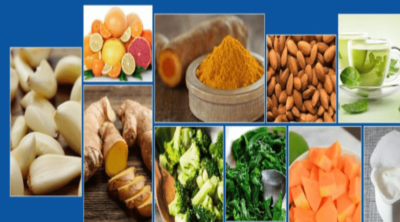
Though arrowroot has limited nutritional value, it is said to contain various health benefits. Go through this article for a brief overview about the nutrients in arrowroot.
Arrowroot is a term that is used to denote both the plant, its roots as well as the flour derived from the roots of the plant. Though arrowroot plant is now cultivated in many parts of the world, it is native to West Indies, certain parts of Australia, Africa and Asia. This plant with the scientific name, Maranta arundinacea belongs to the genus Maranta in the family Marantaceae. It is the yellowish white rhizomes (with scaly skin) of this plant that are edible. Apart from being used for culinary purposes, these rhizomes are also found to have certain health benefits. These rhizomes are also used for making starch (arrowroot flour), which is used for both culinary and medicinal purposes.
In order to extract the starch, the rhizomes are washed, before removing the scales completely. Once the skin gets removed fully, they are once again washed and ground. The resultant milky white liquid is allowed to sit for some time, so that the starch settles down. This starch is then dried to prepare arrowroot starch, which is used for making cookies, puddings, biscuits and cakes.
Arrowroot Nutrition Facts
Indigenous to West Indies, arrowroot is said to be used by the native people of the region – Arawaks. Apart from using the rhizomes of arrowroot plant for culinary purposes, these people used them for drawing out poison from injuries caused by poison arrows. It is believed that the name arrowroot must have been derived from this practice. Evidences suggest that these rhizomes have been used in the Americas for the last 6000 to 7000 years.
Earlier, people used to consume boiled arrowroot rhizomes with some simple flavorings. Now, arrowroot flour it is mainly used as a thickening agent and for making certain dishes. If you want an arrowroot substitute for use as a thickening agent, you may use plain flour, cornstarch, potato starch, etc. The following table will provide you with some information about the nutrients in 100 grams of raw arrowroot as well as its flour.
| Nutrient | Raw Arrowroot (100 gm) |
Arrowroot Flour (100 gm) |
| Carbohydrates | 13 g | 88 g |
| Protein | 4 g | 0 |
| Dietary fiber | 1 g | 3 g |
| Vitamin A | 19 IU | 0 |
| Vitamin B1 | 0.1 mg | 0 |
| Vitamin B2 | 0.1 mg | 0 |
| Vitamin B3 | 1.7 mg | 0 |
| Vitamin B6 | 0.3 mg | 0 |
| Vitamin C | 1.9 mg | 0 |
| Folate | 338 mcg | 7 mcg |
| Potassium | 454 mg | 11 mg |
| Calcium | 6 mg | 40 mg |
| Phosphorous | 98 mg | 5 mg |
| Sodium | 26 mg | 2 mg |
| Iron | 2.2 mg | 0.3 mg |
| Magnesium | 25 mg | 3 mg |
| Zinc | 0.6 mg | 0.1 mg |
| Selenium | 0.7 mg | 0 |
| Manganese | 0.2 mg | 0.5 mg |
While calories in 100 grams of raw arrowroot is 65, the same is 357 in case of arrowroot flour. Around 20 to 23% of arrowroot rhizomes contain starch. Both raw arrowroot as well as the flour are devoid of any fat and cholesterol. This is one of the plus points of arrowroot, which has certain nutrients too. However, most of the nutrients in raw arrowroot get reduced or lost, as it is processed to the flour form.
Arrowroot Health Benefits
Apart from being used as food for infants as well as patients who are recovering from illnesses, arrowroot is also used for treating digestive problems like diarrhea. Arrowroot is applied on the gums and inner sides of the cheeks for relieving pain and inflammation. It is said to be an excellent digestive aid and is also used by people with dietary restrictions. In some regions, it is used as an antidote for certain types of vegetable poison. Ground arrowroot rhizomes are applied over wounds and insect bites. It is also said to be useful for drawing out poison from the bites of scorpions, spiders, etc.
As it is gluten-free, arrowroot is also good for those with gluten intolerance or allergy. This article is only for informative purposes. So, it will be better to consult a nutritionist, if you want to know the details about arrowroot nutrition benefits.

